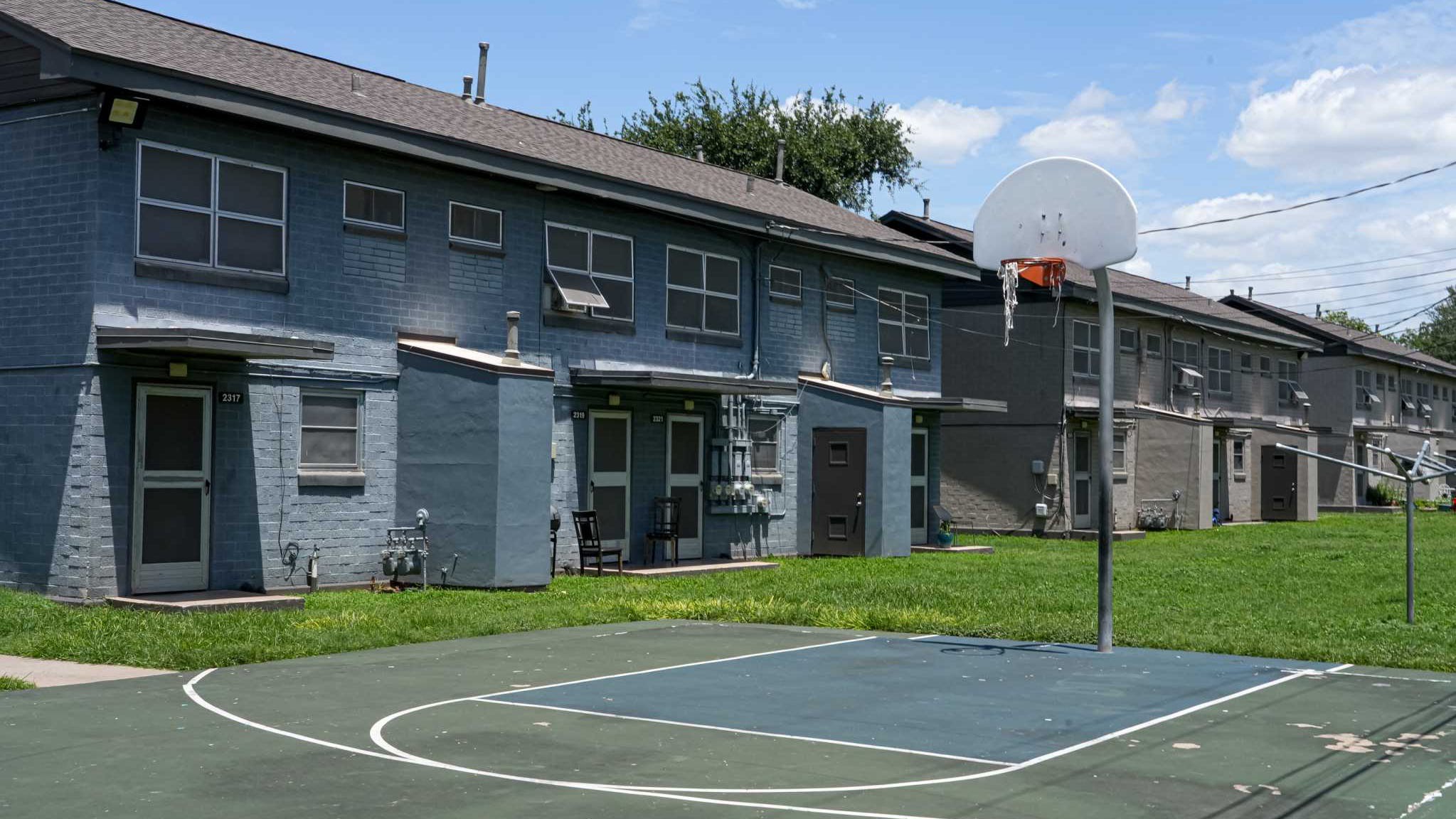news
East Austin's Santa Rita Courts, the oldest public housing project in US, to be redeveloped
Built in 1939, Santa Rita Courts is set to receive a long-awaited facelift after the city's Housing Authority secured federal funds Thursday.
Published July 24, 2025 at 5:51pm

In less than a year at Santa Rita Courts, Antasia Smith has found community in a way she didn’t expect or previously have: neighborly barbecues, a bustling playground for her kids, friends she can call on for a missing recipe ingredient or a tissue box.
Soon, that will be gone. And though she will miss it, Smith, 28 and a mother of three, understands the change to come. As residents of the country’s oldest public housing complex, she and her neighbors have endured the inconveniences of living in a group of largely uninsulated, gray-and-brown brick buildings, some more than 85 years old. Rooms often fail to cool in the summer or heat in the winter, adding to the discomfort.
As her neighbor Patricia Owens — a 13-year resident known by Santa Rita children as “Mama Trish” — put it: “They need to break them [the buildings] down and put them back up.”
On Thursday, the Housing Authority of the City of Austin, which manages Santa Rita, won competitive tax credits from the Texas Department of Housing and Community Affairs, securing the funds needed to move forward with the first phase of its redevelopment plan. The news propels the agency’s plans and signals an impending move-out for Santa Rita’s 97 families.
Last year: Redevelopment is still out of sight for Austin's last original public housing project
Residents could begin relocating to other public housing sites or Section 8 units as early as next month. The Housing Authority hopes to begin construction on the first half of the site next year, Vice President Ann Gass said. It is working on an application to fund the second half of the project and aims to complete the full redevelopment by 2028.
If all goes as planned, new four-story buildings will be built between eight of the original bungalows, which will be renovated but preserved because the site is listed on the National Register of Historic Places. The new complex will include three times as many units and feature a pre-K program, community rooms, playgrounds, gyms and a basketball court. Current Santa Rita residents will have first right of return.
“Simply put, the residents deserve a better quality of life than the 1939 construction provides,” Gass said.
Long-overdue repairs become a full rebuild
Thanks in part to the aggressive lobbying of then-U.S. Rep. Lyndon B. Johnson, Austin became home to three of the country’s first public housing projects during the Great Depression. Representative of New Deal optimism, the complexes provided basic standards — like plumbing — that many poor Americans lacked at the time. But they were segregated: Chalmers for white residents, Rosewood for Black residents, and Santa Rita for Mexican Americans.
The decades have taken their toll. At Santa Rita, Austin’s humidity combined with poor circulation has led to chronic mold problems in bathroom window sills and ceilings. Residents also continue to battle pests like roaches and mice that enter through aging foundations. The buildings still lack central air, among other amenities “that we take for granted in modern Texas,” Gass said.
Over the past decade, the Housing Authority has redeveloped Chalmers and Rosewood. The Chalmers project was completed last year; Rosewood is expected to finish next spring.
Santa Rita is the last one left.
A legacy of inequity
Last year, in a rare political move, the Housing Authority pushed the Austin City Council to prioritize Santa Rita’s redevelopment over a private affordable housing project. It argued that the city should focus on improving conditions for some of its most economically disadvantaged residents. The developer affected by the shift warned that doing so risked politicizing a historically technocratic process. Ultimately, the council chose not to intervene, leaving Santa Rita’s future uncertain.
“It hurts,” said Lupe Garcia, 76, president of the Santa Rita resident council.
One challenge to securing federal funding has been Santa Rita’s proximity to Chalmers and Rosewood. Current Texas law discourages clustering low-income housing, said Awais Azhar, director of HousingWorks Austin. But Azhar said advocates are now pushing the Legislature to make exceptions for gentrifying urban cores, like central East Austin.
Santa Rita’s location is ideal. As part of the old city grid, it’s within walking distance of an H-E-B, two parks, Lady Bird Lake, an elementary school, youth centers and a bus stop.
Redevelopment could offer a path forward
During the school year, Smith walked her 6-year-old to Zavala Elementary and joined classroom events. This summer, she has taken her children to the Boys & Girls Club and to nearby pools and splash pads — all within a mile of their apartment.
For Garcia, Santa Rita has allowed her to stay in her childhood neighborhood and remain close to lifelong friends.
These qualities make Santa Rita a gem, Azhar said. In affordable housing circles, the focus has long been on creating access to high-opportunity areas — places close to jobs, health care and public transit. Building more units in central East Austin accomplishes just that, he said, and could allow displaced residents to return to their schools, churches and cultural institutions.
“We want folks to remain in their communities, to remain in their school districts, to be part of where they've historically been,” Azhar said.

